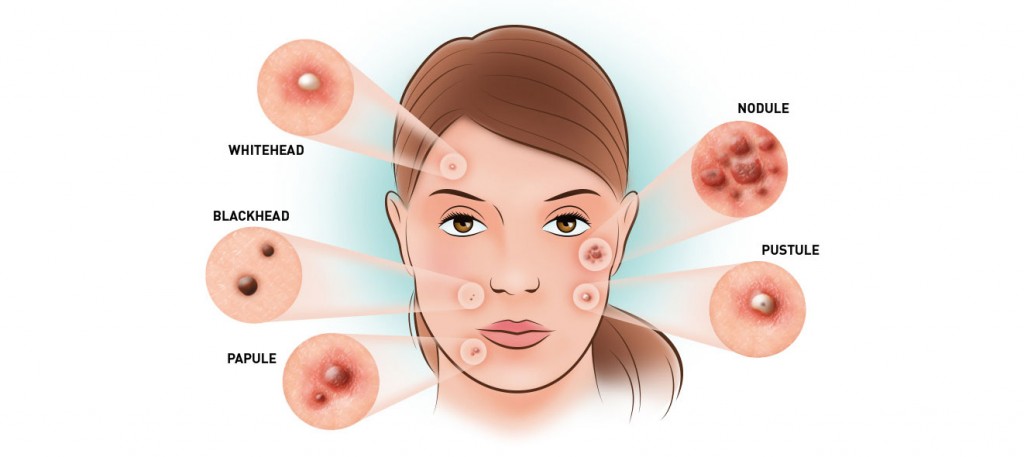One might think that acne refers to only one kind of phenomenon, but this is not true. There are many different types of acne, which severity can range from mild to moderate to heavy.
Common Types of Acne
The most common type of acne is termed acne vulgaris, usually involving several types of pimples. This also includes acne lesions such as whiteheads, blackheads, pustules, papules, cysts, and nodules.
The second type of acne is usually confused with the first type, and is called acne rosacea, because the two can look very similarly with each other. Rosacea is common, affecting millions of individuals, majority are women more than 30 years old. However, in the rare cases that they are found in men, they have been found to be more severe than those found in women.
Rosacea is characterized by red rashes which are normally confined to the forehead, nose, cheeks, and chin. This redness usually comes with bumps, pimples, and skin blemishes, but not blackheads. The more severe and untreated cases of rosacea involve the swelling of the nose and development of excess tissue.
While the two types of acne may look alike, treatment of one is different from that of the other; thus, it is vital to determine whether one’s condition is one of vulgaris or rosacea by consulting with a doctor.
The third type of acne is more severe and more commonly found in males. This is called acne conglobata. This type is often identified by too many large lesions accompanied with extensive blackheads. This type can be found in all places, including the face, back, chest, upper arms, buttocks, and thighs. This is a severe form of acne already, as it can cause severe and irrevocable damage to the skin, which can cause extreme scarring.
Another type of ance is called acne fulminans, which is an abrupt onset of acne conglobata. This type is usually found among young men. This type is usually involves aching of the joints, fever, and severe nodulocystic acne. This also causes disfiguring scarring, which classifies it as a severe form of acne.
There are still many other types of acne. The important thing to know is that before treating them, one should first consult a doctor in order to ensure that the patient gets the correct and proper treatment for the type of acne he has.
Role of Relaxation to Prevent Acne
Acne is caused not only by the food we eat, but also by stress and lack of sleep. This is especially so in cases of adult women. Realizing this, one should therefore take steps in reducing stress in order to also reduce the onset of acne. Thus, understanding stress, how it causes acne, and how to combat it is essential for one who experiences acne problems.
Stress releases the stress hormone called cortisol, which influences the severity of the acne. Thus, combating acne means addressing the problem of stress first. It is better to fight stress before it happens. This is accomplished simply by relaxation. A relaxed person will accomplish two things right off the bat: alleviate his stress-related acne and make living and coping with the psychological effects of acne easier for him.
Time is the easiest answer to the problem of how to relax. Taking time out from one’s busy schedule and devoting some of it doing things he enjoys doing will do wonders for his physical and mental well-being. Lounging around, doing nothing, or reading a book is just some of the things one can do to relax. Also, one can listen to music, take a long and warm bath, or watch a feel-good movie in order to take his mind off from work and problems, even for just a little while. When this is done, one will find that he is enabled to accomplish more than when he works long hours continuously.
One can also relax more scientifically, by doing breathing exercises and meditation. Breathing exercises bring about a more relaxed mind and body because they allow the mind to focus. They also allow more oxygen to flow into the blood stream. These exercise help calm a stressed mind by regulating one’s breathing.
